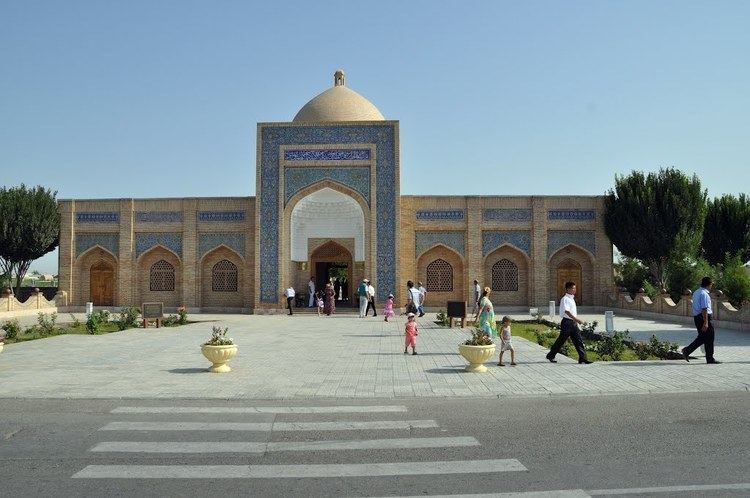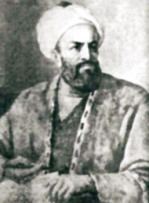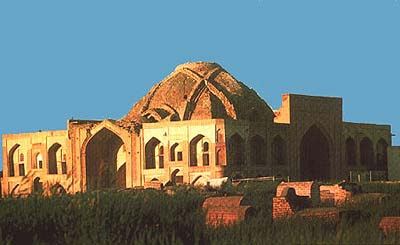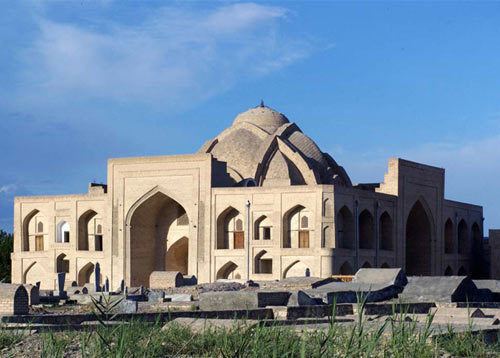Venerated in Islam Name Baha-ud-Din Bukhari | Died 1389, Bukhara, Uzbekistan | |
 | ||
Baha-ud-Din Naqshband Bukhari (Persian: بهاءالدین محمد نقشبند بخاری) (1318–1389) was the founder of what would become one of the largest and most influential Sufi Muslim orders, the Naqshbandi.
Contents

Biography

Baha-ud-Din was born on 18 March 1318 CE (14 Muharram, 718 AH) in the village of Qasr-i-Hinduvan (later renamed Qasr-i Arifan) near Bukhara, in what is now Uzbekistan and it was there that he died in 1389.

He came into early contact with the Khwajagan (lit: the Masters), and was adopted as spiritual progeny by one of them, Baba Muhammad Sammasi, while still an infant. Sammasi was his first guide on the path, and more important was his relationship with Sammasi's principal khalifa (successor), Amir Kulal, the last link in the silsila, or chain of teachers, before Baha-ud-Din:

- Muhammad
- Abu Bakr
- Salman the Persian
- Qasim ibn Muhammad ibn Abu Bakr
- Ja'far al-Sadiq
- Bayazid Bistami
- Abu al-Hassan al-Kharaqani
- Abu Ali al-Farmadi
- Yusuf Hamadani
- Abul Abbas al-Khadr
- Abd al-Khaliq Ghijduwani
- Arif Riwakri
- Mahmud Faghnawi
- Ali Ramitani
- Baba Sammasi
- Amir Kulal
- Baha'al-din Naqshband Bukhari
Lineage

In her book "Pain and Grace: A Study of Two Mystical Writers of Eighteenth-Century Muslim India," Annemarie Schimmel writes: "Khwaja Mir Dard`s family, like many nobles from Bukhara, led their pedigree back to Baha'uddin Naqshband, after whom the Naqshbandi order is named, and who was a descendent, in the 11th generation, of the 11th Shia imam al-Hasan al-Askari." Baha-ud-din Naqshband's lineage is described as: Sayyid Baha-ud-din Naqshband Bukhari, son of Sayyid Muhammad Bukhari, son of Sayyid Jalal-ud-din, son of Sayyid Burhan-ud-din, son of Sayyid Abdullah, son of Sayyid Zain al-Abideen, son of Sayyid Qasim, son of Sayyid Sha'aban, son of Sayyid Bulaq, son of Sayyid Taqi Sufi Khilwati, son of Sayyid Fakhr-ur-Din, son of Sayyid Ali Akbar, son of Imam Hasan al-Askari, son of Imam Ali al-Hadi, son of Imam Muhammad al-Taqi, son of Imam Ali ar-Ridha, son of Imam Musa al-Kadhim, son of Imam Ja'far al-Sadiq, son of Imam Muhammad al-Baqir, son of Imam Zayn al-Abidin, son of Imam Husayn ibn Ali, son of Imam Ali ibn Abu-Talib..
Baha-ud-Din was buried in his native village, Qasr-i Arifan, in 1389. In 1544 Khan Abd al-Aziz built over his grave a tomb and surrounding buildings. The Memorial complex is located 12 kilometers from Bukhara and is today a place of pilgrimage.
